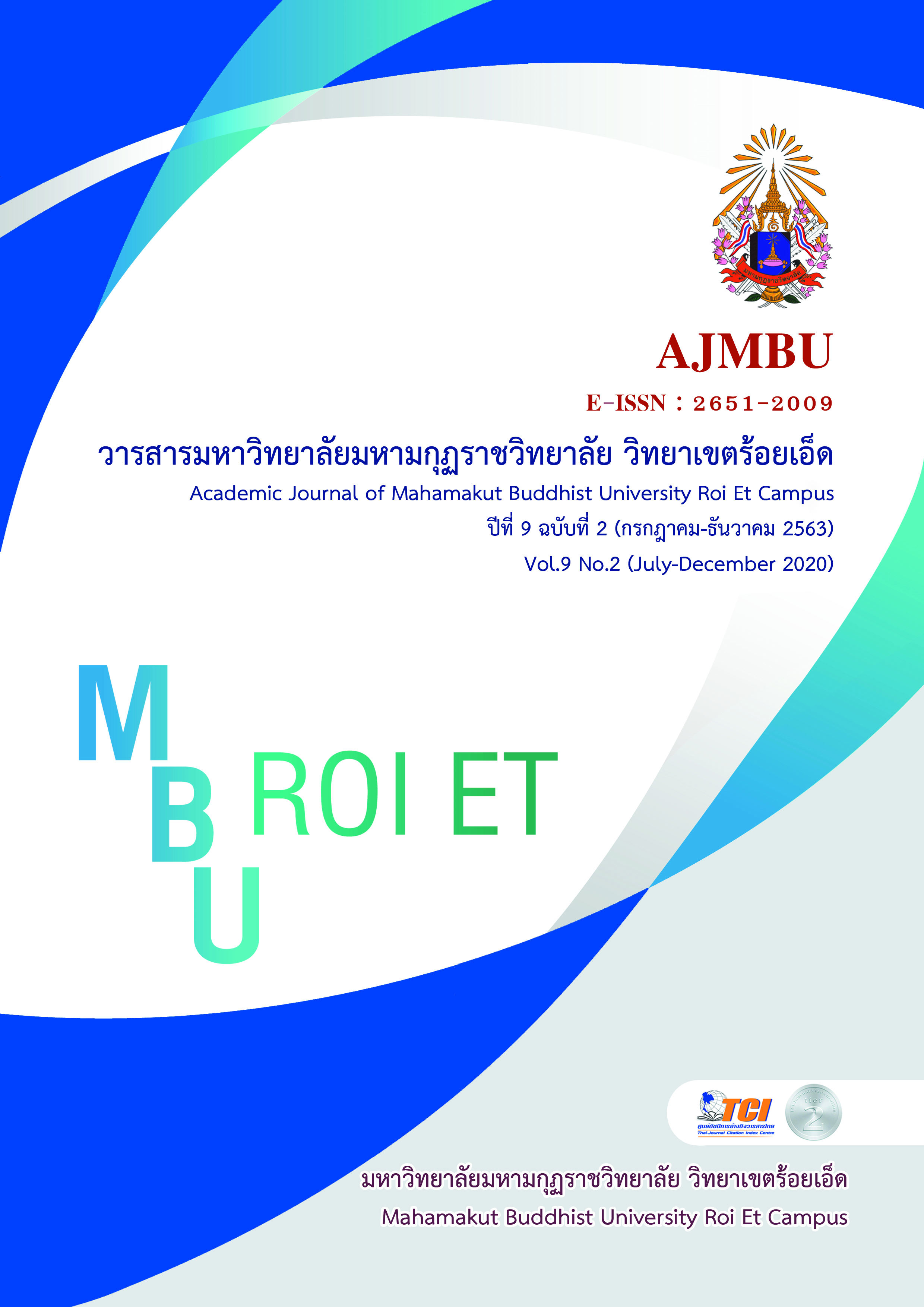The PET Bottle Processing Guidelines for Application in Handicrafts
Main Article Content
Abstract
The objectives of the research article were 1) to study the original product form of handicraft products from plastic lines, 2) to study the processing of PET bottles instead of plastic lines applied in handicrafts and 3) to evaluate the opinions of products from bottles PET designed and developed as a substitute for plastic lines This research uses a combination of qualitative research and quantitative research. The sample group for quantitative research is people in Kosum Phisai District. Mahasarakham Province, 100 people inquiring about the needs of consumers Then evaluate the model by 2 community product manufacturers, 3 plastic processing experts, to evaluate the suitability of processing in the application of handicrafts. Then create a prototype and evaluate the level of consumer feedback.
The results of the research were as follows: 1) Data analysis from consumer questionnaires with opinions on the original products made with plastic lines By which consumers have opinions on the basket products, put the most items in the safety and strength of the basket products, put the items at the highest level), followed by the beauty of the basket products, put things At the highest level. Then, using a questionnaire for consumers to express opinions of consumers towards the introduction of plastic lines from PET bottles developed into products in various forms. The results show that consumers have the desire to develop Is the product in the form of a basket containing the most items, followed by women's bags 2) processing of PET bottles instead of plastic lines for use in handicrafts The results from the experts found that The product obtained from the plastic line processed from the PET bottle developed into a basket of beauty and suitability, followed by the suitability for use and 3) the result. The post-production evaluation of PET plastic products from PET bottles appears that the beauty of plastic lines from PET bottles is at the highest level, followed by physical benefits. With ease of use.
What is obtained from the research study is a way of bringing waste that is abundant in society and never exhausted to be processed by taking into account the needs of the consumer group. In order to apply in handicraft, the product is accepted and actually used.
Article Details
References
กัลยา ตันติยาสวัสดิกุล. (2553). โครงการการแปลงรูปวัสดุขยะขวดน้ำดื่มพลาสติกเพื่อใช้ในงานออกแบบ ที่กรองแสงลานจอดรถ. คณะสถาปัตยกรรมศาสตร์และการผังเมือง : มหาวิทยาลัยธรรมศาสตร์.
ชาญณรงค์ รัตนะ. (2547). จรวดขวดน้ำ. วารสารการศึกษาวิทยาศาสตร์คณิตศาสตร์และเทคโนโลยี. 32(129). 44-52.
ตระกูลพันธ์ พัชรเมธา. (2552). การพัฒนางานออกแบบหัตถกรรมจากกรรมวิธีการทำเครื่องเขิน. วารสารมหาวิทยาลัยศรีนครินทรวิโรฒ (สาขาวิทยาศาสตร์และเทคโนโลยี). 1(2). 78-91.
มัณฑนา ขำหาญ และ ชัญรีภรณ์ แซ่เฒ้า. (2560). การออกแบบและพัฒนาชั้นวางของจากขวดน้ำพลาสติกที่ปรับเปลี่ยนประโยชน์ใช้สอย. ใน นเรศวรวิจัย ครั้งที่ 13 : วิจัยและนวัตกรรม ขับเคลื่อนเศรษฐกิจและสังคม. พิษณุโลก : ม.ป.ท.
สุนันทา พลทวงษ์. (2551). คู่มือแนวทางการลด คัดแยก และใช้ประโยชน์ขยะมูลฝอยสำหรับอาสาสมัครพิทักษ์ทรัพยากรธรรมชาติและสิ่งแวดล้อมหมู่บ้าน. กรุงเทพมหานคร : รุ่งศิลป์การพิมพ์ (1977).
สมชาย สิกขาและคณะ. (2558). การพัฒนางานหัตถกรรมไม้ไผ่ในภาคอีสาน.วารสารวิชาการ ศิลปะสถาปัตยกรรมศาสตร์ มหาวิทยาลัยนเรศวร. 6(1). 110-120.


